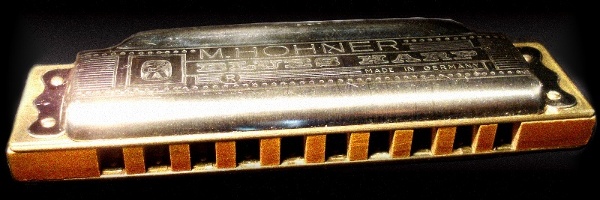Yes folks, just when you thought it was safe to get back in the water, along came overblows and overdraws, the technique has only relatively recently become established and was developed mainly by a player called Howard Levy. The whole over-bending thing is a pretty heavy concept because it allows you to get all the extra notes needed to make the blues harp a chromatic instrument – which means you can play any song in any key on one harp!
Over-bends are like the opposite to bends in that they are all blow in the low to middle register and draw in the higher register. In the next sections I’ll demonstrate and explain how to get all those ‘missing’ notes.
Do I need it?
Because over-bending is quite a recent thing, none of the traditional blues harp players actually used it, so if you’re happy playing traditional style then you probably won’t miss it too much, however, learning this new technique could open up many possibilities in your playing style, especially if you want to do something original.
So then I’d only need one harp?
Strictly speaking in terms of notes, maybe, however, you wouldn’t be able to copy all the cool licks say you can get in cross harp and play them in all the keys on one harp – because the same bends just won’t be there. What you will get is a lot of new sounding licks you could use in different situations.
Harp Setup
I should mention that if you’re going to learn to over-bend it’s important to have your harp reeds adjusted for this. The reed clearances need to be quite finely tuned to facilitate the technique. I’ll go over this in more detail in the ‘Harp Tuning’ section.
NOTE: Over-bend is the term I’m going to use to describe both Overblows and Overdraws, many folks just use ‘Overblows’ to describe them both but I think it’s clearer to keep them separate.

